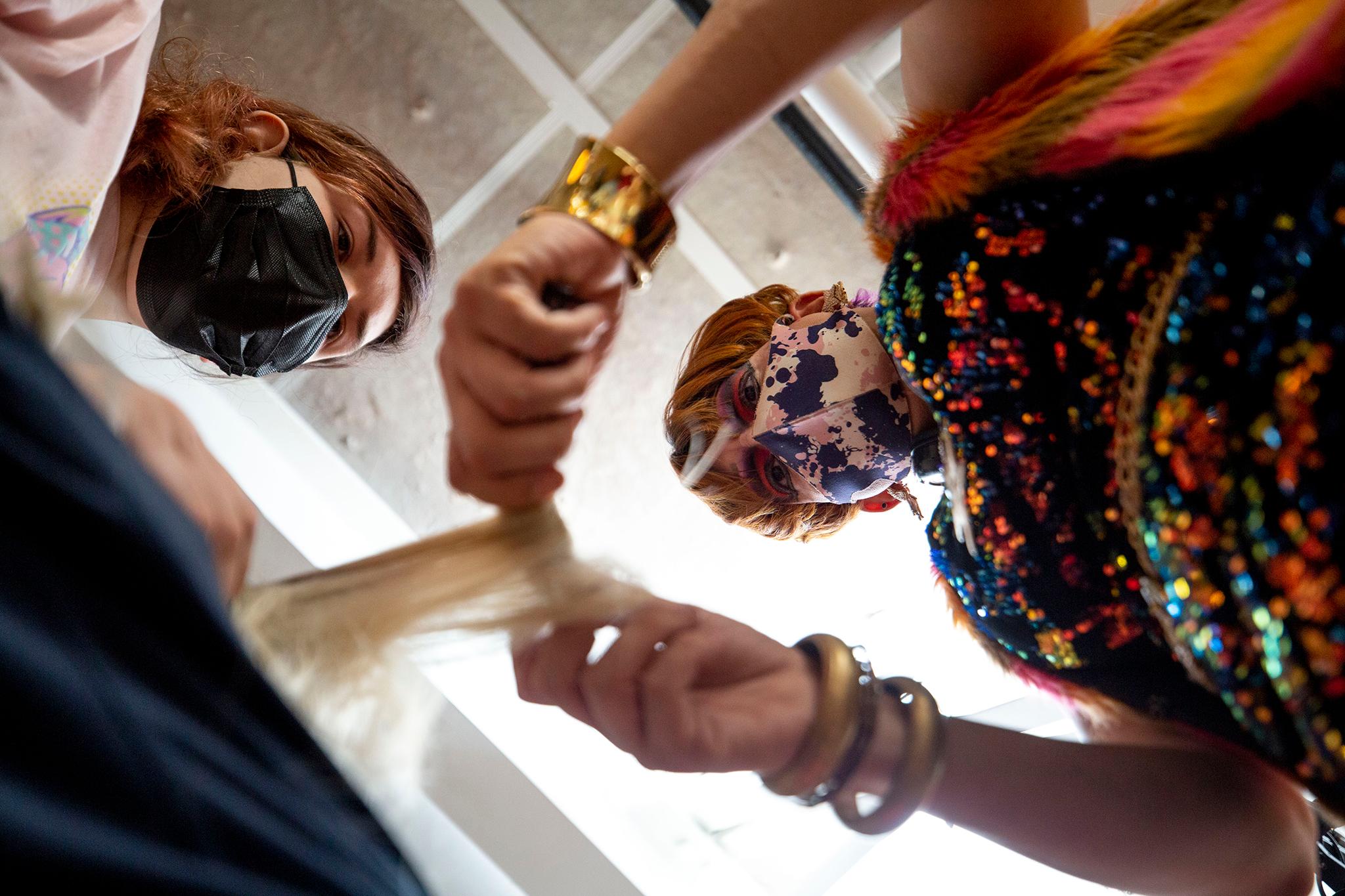Charles Fleming was 18 when they first tried drag on a dare. A friend paid Fleming $20 to show up in drag to a club they frequented. Fleming put together an outfit.
While there, they bumped into a drag queen they'd had gotten to know during their previous visits to the club.
"She brought me onstage, ripped me a new one, told me never to drag again," Fleming said. "And I had to prove her wrong. And I did."
Most drag performers learn the art of drag from drag families -- found families typically led by an elder drag "mother" who teaches, advises and mentors younger drag kings and queens.
"Drag has always been passed down. Word of mouth kind of thing," Fleming said.
You pick up the knowledge over time from people who came before you and from just trying on different wigs, Fleming said, but it can take a while for all of the skills involved -- hair, makeup, costume, performance -- to click.
Fleming met their drag mom that same year and found a community to support them and teach them the ways of drag.
"It's so important to have people who support and accept you and just love you for you," Fleming said. "There's a lot of people who would fear things and just not do things because of the fear. So it's very important to have that support of a family."
Now a professional drag queen who performs in Denver under the name Diamond Starr, Fleming is one of the instructors in a new drag course for teens and tweens at Stanley Marketplace. The curriculum includes one-off workshops for skills like wig stacking, professional drag queen makeup and performance technique. There's also a four-week course called The Lewk, where students learn practical sewing and fashion techniques to build and execute a signature drag look. The course ends with a final performance, during which students show off their looks and practice their routines.
But more than being a place to learn sewing and design skills, Drag Teen-Tween Fashion is a course that allows young people to learn different ideas and try out forms of expression in a safe, nurturing environment.
"I've had so many people tell me I'm not good enough for this or good enough for that," Fleming said. "I hate that feeling of not being accepted or being embarrassed like that. I don't want any of the children, or teens, tweens, to ever feel like that."
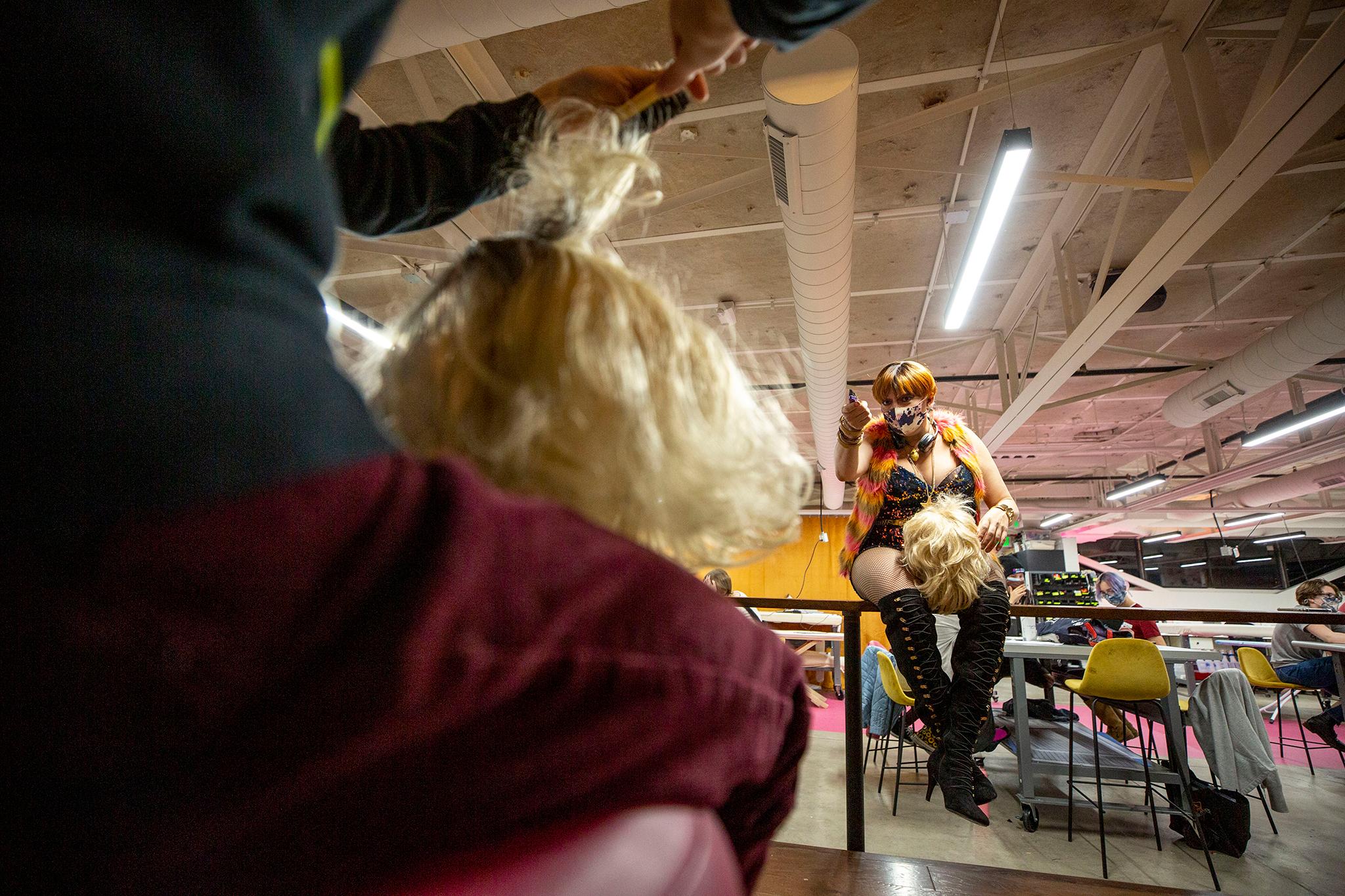
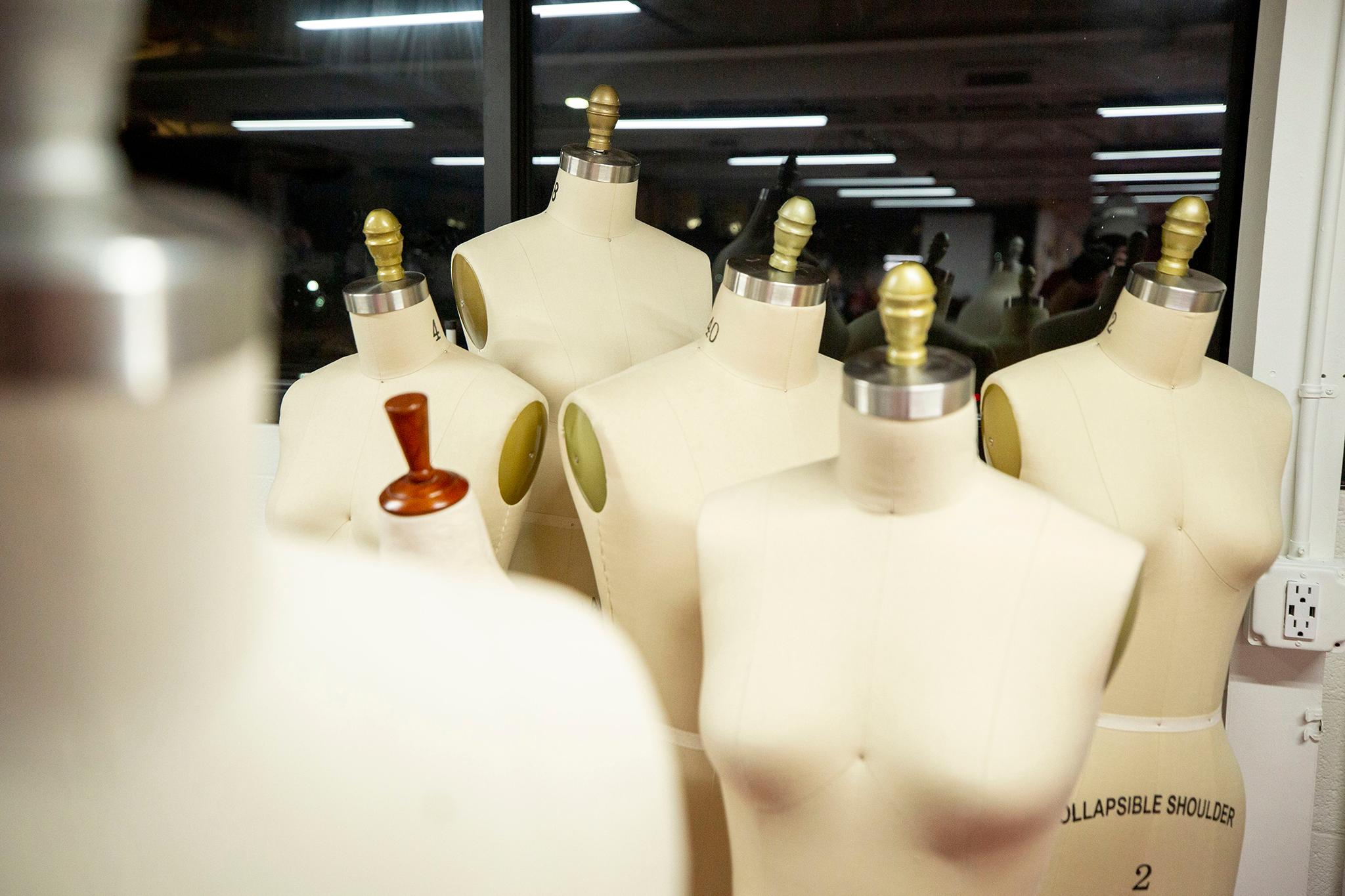
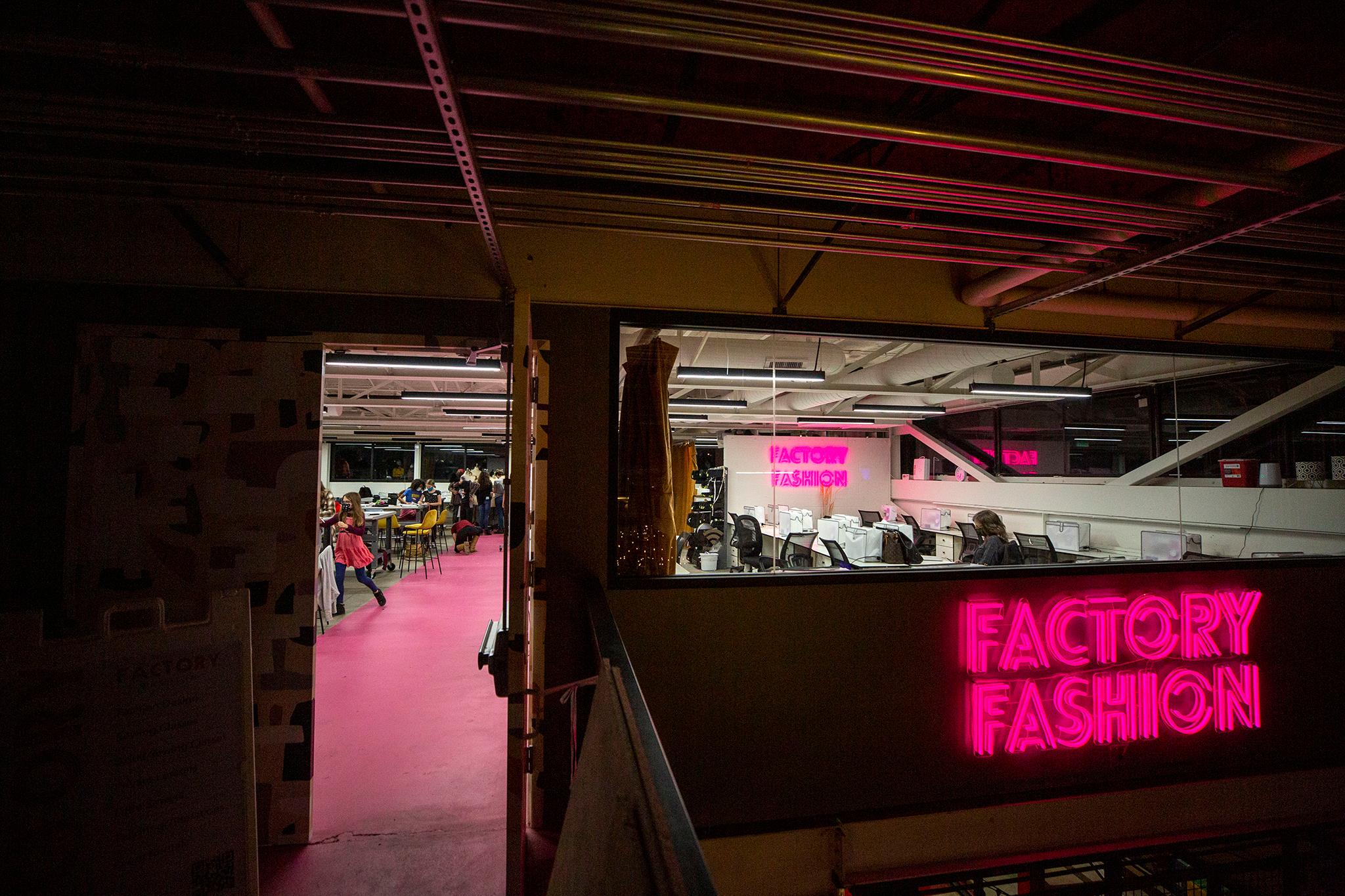
The program is one of the educational courses offered by Factory Five Five, an art collective at Stanley Marketplace that offers adult and youth classes in film, theatre and, more recently, fashion.
"We added the fashion component partially because we were already doing it," said Factory Five Five owner Skye Barker Maa. She said film and theatre students often build every element of their productions from scratch, including their own costumes.
"Part of what I realized was that there was just a real need for some flexible options for students who wanted to learn how to sew and wanted to learn costume design, maybe fashion design," Barker Maa said.
The collective's new fashion tract, Factory Fashion, provides courses like sewing and fashion design, as well as a daytime workspace for designers that at night turns into a pop-up event space with a full bar. Factory Fashion also offers summer camps and other youth programming like the drag class.
"We have this next generation of students coming up in an industry that really has been skipping generations," Barker Maa said. "My mother did not know how to sew or crochet or do any of those spectacular crafty things. But my grandmother could do everything. And part of what we're trying to do with this program is make sure that these arts aren't lost and that we're making it accessible and fun for students."


The youth classes are designed to teach sewing and design in a way that appeals to a younger generation by catering to their interests. For example, Factory Fashion offers a class where students can learn to make costumes from the musical "Hamilton." The drag program was also inspired by some of the things in which other Factory Five Five programs students showed interest.
"We already have a ton of kiddos who are LGBTQ, who are out, who are exploring style and fashion," Barker Maa said. "And that was part of it. I was watching our students and as they were trying to teach themselves how to apply their makeup, how to handle wigs."
In designing the drag program, Factory Five Five met with local drag performers to ask what they thought should be included in the curriculum.
"We started by saying, what skills do you wish you would have learned, and what did you struggle with?" Barker Maa said. "Is it hard to bedazzle a jacket? Is it hard to stack that wig up into a bouffant '60s 'do?"
Meanwhile, Fleming became familiar with Factory Five Five after reading an article about the different programs it offered. Fleming said it struck them that the collective offered so many different art forms under one roof.
"Drag is an intersection of many different art forms, be it dance, be it theater, be it fashion - any kind of art form, basically," Fleming said. Drag performers typically come up with a look and lip sync to a song onstage. They have to choose a song to represent their persona. They have to design their hair and makeup and costume. "You're directing yourself, you're choreographing yourself. It's all a bunch of things all rolled up into one."
Fleming reached out to Factory Five Five, and learned they were thinking about offering drag classes. Soon, Fleming was brought on as an instructor, alongside local designer Darlene C. Ritz.
"I find it so amazing," Fleming said. "These opportunities for these tweens, teens, didn't exist when I was young."
As part of the curriculum, Fleming made a packet of drag tips and tricks they'd learned over the years and handed a copy to each student. The packet also includes workbook pages to help the students plan their looks out on paper, like body outlines so they can design costumes on the page, and face outlines so they can design their makeup.
Fleming also made sure to include, on the first page of the packet, a list of mental health resources and local LGBTQ+ organizations.
"I want to make sure that these kids know that it's not just about onstage. It's also about being yourself and being OK to have a place to be yourself," Fleming said. "I want to make sure they have those resources, first and foremost."
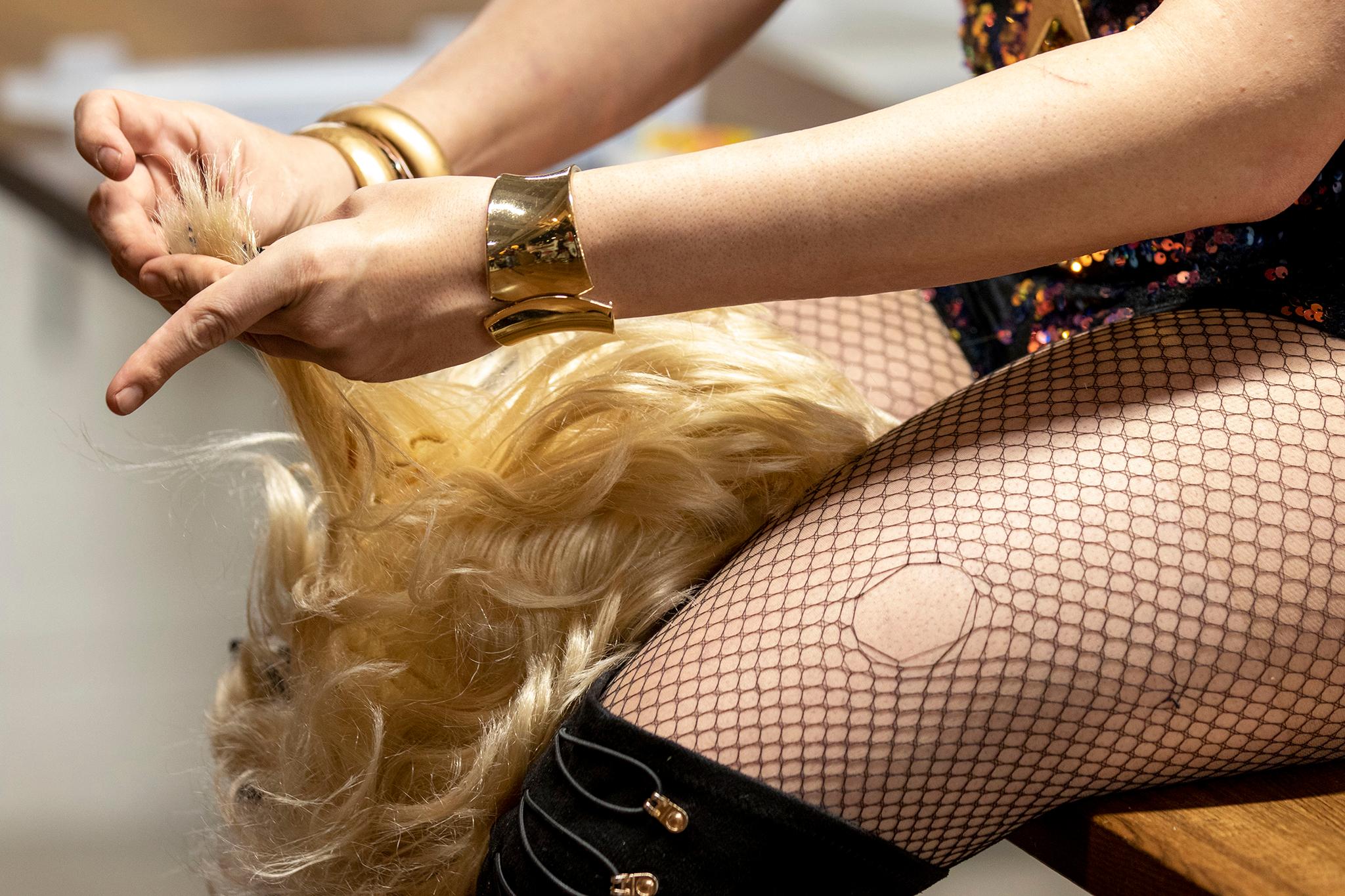
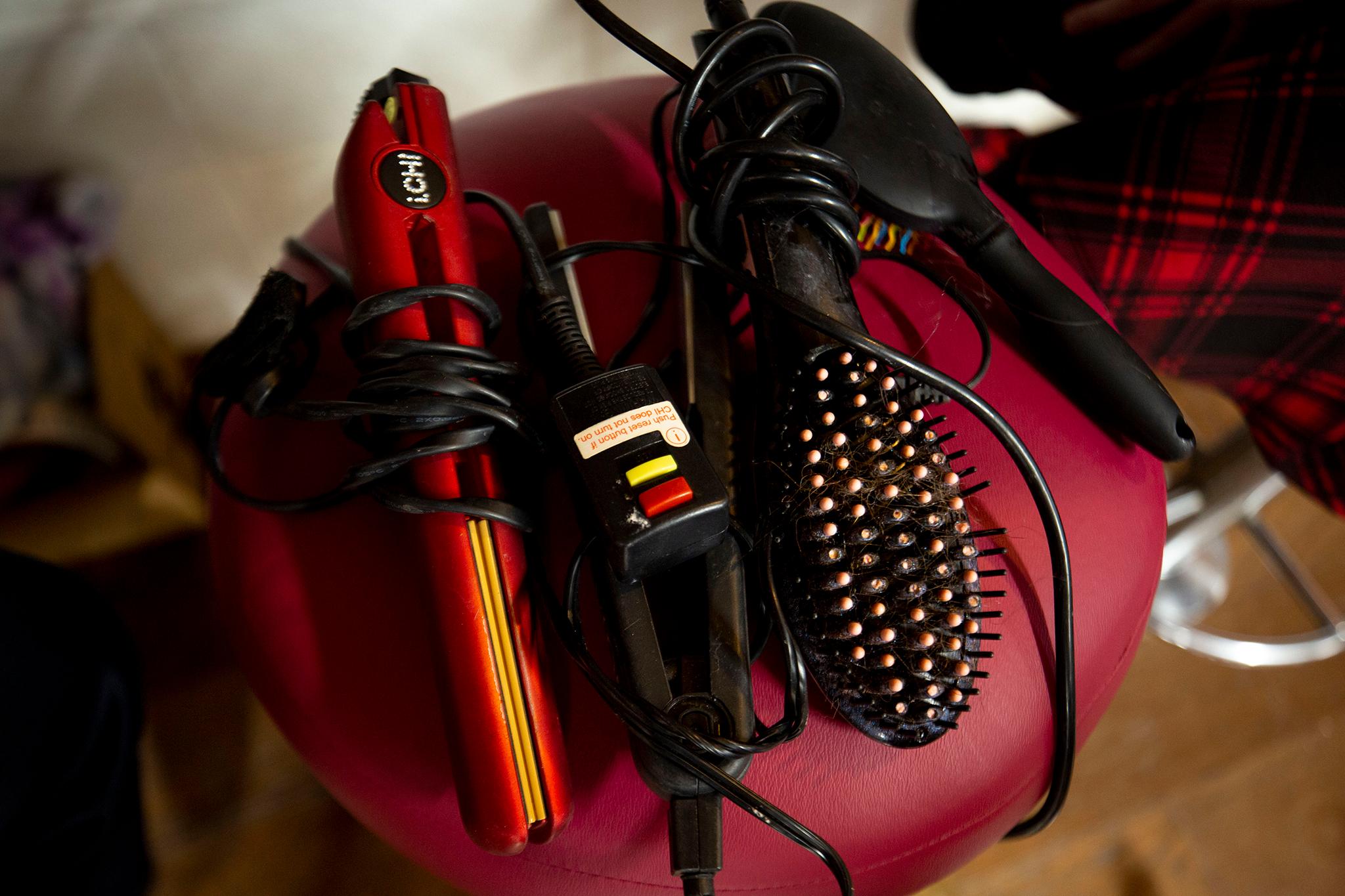
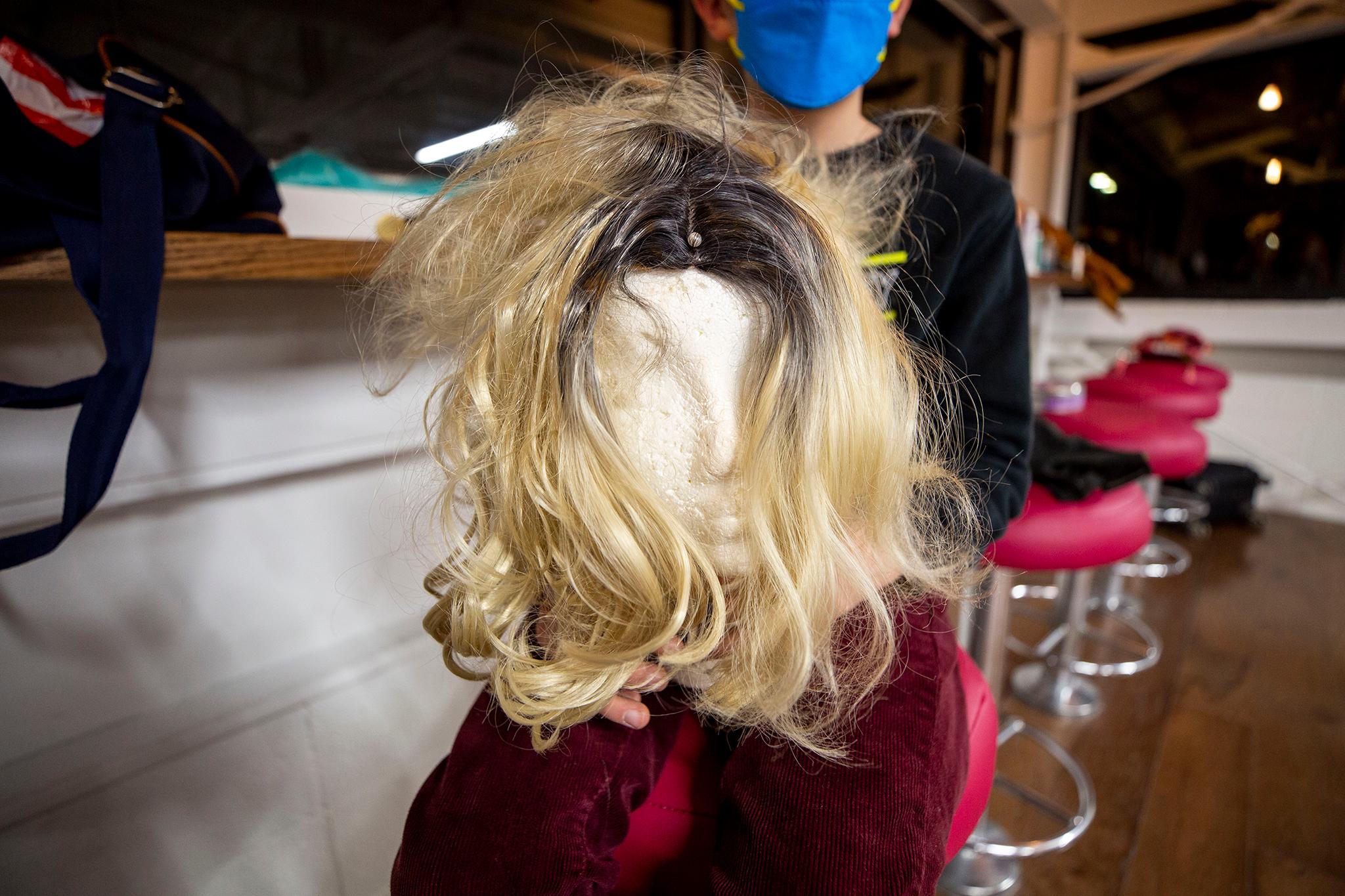
Fleming also makes a point of getting one-on-one time with each of the students. When students are busy working on their looks, Fleming walks around the room, checking in on each of them and giving tips.
"I try to make sure that each student gets a little bit of individual attention so they feel supported," Fleming said. Drag family is family, they explained. It's important to Fleming that the students get that supportive family feeling.
The program offers young people a way to explore their interests in drag under the guidance of supportive adults.
"We're really lucky in Denver that we are more progressive than not," Barker Maa said. "But at the same time, when you're a 12-, 13-year-old student, and you suddenly want to look like someone else or be someone else or explore your own personal fashion in other ways, that can be hard."
Many LQBTQ+ youth don't necessarily have the support of their biological families. It makes having the support of drag families, or other caring adults in their lives, even more important.
"Unfortunately, there's still a lot of bigotry in this world, and there's still a lot of kids who are disowned and hurt," Fleming said. "Having a safe space to be yourself is just so important."
For example, Fleming said, the program can be a platform for students to explore their gender identities.
"I was asking each of them individually what made them interested in this. A lot of them said that it was their gender identity. They want to learn more about that aspect of drag," Fleming said. "That made such sense to me because, if I had a class like this when I was younger, I would have been able to accept my non binary status. When I was younger, there was no word for non binary. So I always felt left out with other drag queens."
Drag, as an art form that encompasses so many different artistic elements, can also be a method for young people to confront or process some of the challenges they're facing in their lives. Being a teen or tween can be a confusing or emotional time. Drag allows performers to express what they're feeling through the songs they choose, through their choreography, through their choices in costume and makeup.
"It's not just about the makeup. It's not just about the face, or the hair or the costume," Fleming said. "It's a good outlet or expression when you're angry or hurt. It's almost impossible to talk about drag without talking about emotion."
Factory Five Five's drag courses run through the month of January. Teens and tweens interested in a class can sign up online.

